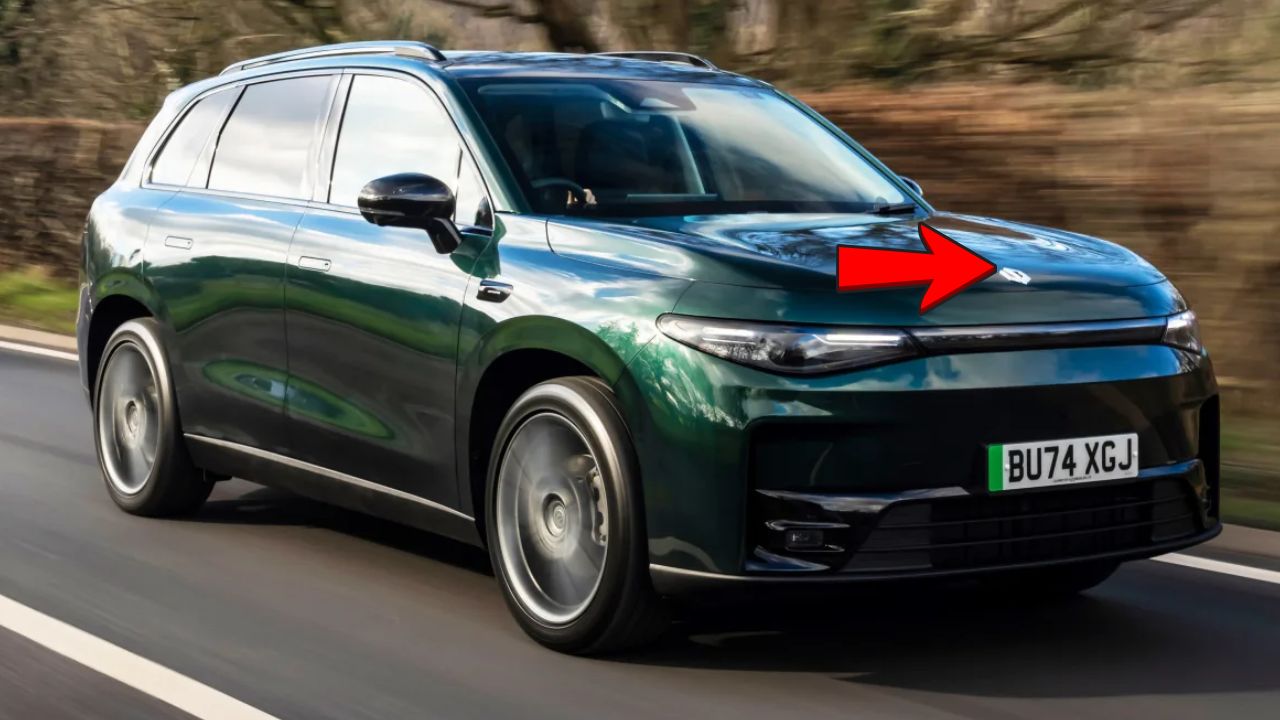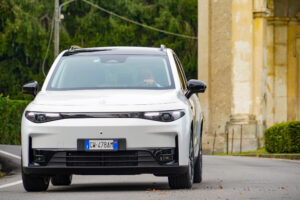The electric vehicle landscape is witnessing an intriguing shift as Leapmotor, China’s rapidly ascending EV manufacturer, makes a bold strategic pivot. The Hangzhou-based company has introduced a hybrid version of its popular C10 SUV, marking a significant departure from its previously all-electric lineup. What’s particularly striking is the company’s confidence that this hybrid model will become their best-selling vehicle, fundamentally challenging conventional wisdom about the EV market’s trajectory.
The Rise of a Quiet Champion
Founded in 2015 by engineer Zhu Jiangming, Leapmotor has emerged from relative obscurity to become one of China’s most successful EV startups. Unlike flashier competitors such as NIO, XPeng, or Li Auto, Leapmotor pursued a more understated approach, focusing on affordable, practical electric vehicles that resonated with everyday consumers rather than luxury buyers.
The company’s journey began with the S01 electric coupe in 2019, but it was the launch of the T03 city car in 2020 that truly established Leapmotor’s market position. Priced competitively at around $7,000-$10,000 in China, the T03 offered a genuine alternative to gasoline vehicles while maintaining over 300 kilometers of driving range. This strategy of democratizing electric mobility proved prescient as Leapmotor’s sales soared from just over 44,000 vehicles in 2021 to nearly 294,000 in 2024.
Strategic Partnership Accelerates Global Ambitions
Leapmotor’s success caught the attention of automotive giant Stellantis, parent company of brands including Peugeot, Jeep, and Fiat. In October 2023, Stellantis invested approximately €1.5 billion to acquire a 20% stake in Leapmotor, simultaneously establishing Leapmotor International as a joint venture with Stellantis holding 51% control.
This partnership represents more than just financial backing; it provides Leapmotor with immediate access to global distribution networks, manufacturing capabilities, and regulatory expertise. For Stellantis, struggling with its own EV transition, the collaboration offers access to cost-effective electric vehicle technology and a pipeline of attractive models designed for global markets.
The C10 REEV: A Hybrid Revolution
The centerpiece of Leapmotor’s global strategy is the C10, a mid-sized SUV that directly competes with popular models like the Tesla Model Y, Kia EV5, and XPeng G6. However, Leapmotor’s innovation lies not just in the pure electric version but in the introduction of the C10 REEV (Range Extended Electric Vehicle) Ultra Hybrid.
This hybrid system combines a 158kW/320Nm electric motor driving the rear wheels with a 1.5-liter four-cylinder petrol engine acting as a generator. Unlike traditional hybrids where the combustion engine directly powers the wheels, the REEV system uses the petrol engine solely to charge the battery, maintaining the electric driving experience while extending range significantly.
The technical sophistication of this approach cannot be understated. Leapmotor claims the C10 REEV is the first EV-based range-extender vehicle since the BMW i3 REx, which was discontinued in 2022. This positioning suggests that Leapmotor has identified and filled a crucial gap in the market where pure electric vehicles may fall short of consumer expectations.
Market Strategy and Pricing Philosophy
Perhaps most intriguingly, Leapmotor has priced the hybrid version at $43,888 in Australia, which is $2,000 less than the pure electric model. This counterintuitive pricing strategy reflects the company’s confidence in manufacturing efficiency and its desire to accelerate market adoption rather than maximize short-term profits.
Local Leapmotor executive Mr. Huang explained the rationale: “We think the REEV, at the moment, is probably meeting more of what our customers in Australia are expecting. Our sales forecast is probably 60-40 REEV over BEV, but it’s early days and over the next couple of months we’ll probably have a better understanding of where those numbers fall.”
This expectation that the hybrid will outsell the electric version by a significant margin represents a fascinating insight into consumer psychology and market readiness for different types of electrified vehicles.
Global Market Context and Consumer Behavior
Leapmotor’s hybrid strategy aligns with broader market trends showing strong growth in hybrid vehicle sales. In Australia, hybrid vehicle sales increased by 18.3% through May 2025, even as the overall automotive market declined by 5.2%. This follows a remarkable 76% growth in hybrid sales during 2024, suggesting that consumers are increasingly viewing hybrids as a practical stepping stone to full electrification.
The company’s approach recognizes that range anxiety remains a significant barrier to EV adoption in many markets, particularly those with developing charging infrastructure. By offering a vehicle that provides electric-like performance with the security of a combustion engine backup, Leapmotor addresses this concern while maintaining environmental benefits.
Technology Integration and Vertical Capabilities
What sets Leapmotor apart from many competitors is its vertical integration strategy. The company develops and manufactures core components in-house, including electric powertrains, intelligent systems, and even AI chips. This approach, reminiscent of Tesla’s early strategy, allows for greater control over costs, quality, and innovation pace.
The company’s “LEAP3.0” architecture, which underpins the C10, was designed from the ground up for global markets and adherence to international safety and regulatory standards. This platform flexibility enables both pure electric and range-extended configurations, demonstrating sophisticated engineering capabilities that extend far beyond simple vehicle assembly.
Competitive Landscape and Market Positioning
Leapmotor’s hybrid strategy positions the company uniquely within the increasingly crowded EV market. While Tesla continues to focus exclusively on pure electric vehicles, and traditional automakers struggle with EV profitability, Leapmotor offers consumers genuine choice within a single brand ecosystem.
The company deliberately avoids naming direct competitors for the C10 REEV, instead focusing on customer needs. As Mr. Huang noted, “I see our competitors, or I see the customer that chooses us, will be someone that’s probably for the C10, someone that needs the space and size of a D-size [large] SUV for the family.”
This customer-centric approach, combined with competitive pricing and technological sophistication, has helped Leapmotor achieve remarkable sales growth. In May 2025, the company delivered a record 45,067 vehicles, representing 148% growth compared to the previous year.
Future Implications and Industry Impact
Leapmotor’s success with hybrid technology may signal a broader shift in the EV industry’s approach to market transition. Rather than viewing hybrids as temporary solutions, companies like Leapmotor are demonstrating that sophisticated hybrid systems can serve as legitimate long-term alternatives to pure electric vehicles.
The company’s partnership with FAW to develop a Hongqi-branded vehicle using Leapmotor’s platform further demonstrates the technology’s appeal. This collaboration, set to begin production in the second half of 2026, will offer both pure electric and range-extended versions for global markets, suggesting that other manufacturers are taking notice of Leapmotor’s hybrid success.
Challenges and Opportunities Ahead
Despite its success, Leapmotor faces significant challenges in its global expansion. Trade tensions, particularly regarding Chinese EV imports, have led to substantial tariffs in key markets. The European Union has imposed tariffs of up to 38% on Chinese EVs, while the United States has implemented even higher barriers.
However, Leapmotor’s partnership with Stellantis provides potential solutions. The joint venture has already begun pre-production of the T03 model at Stellantis’ facility in Poland, potentially avoiding some tariff complications while establishing European manufacturing capabilities.
Manufacturing and Supply Chain Innovation
The company’s approach to manufacturing reflects broader trends toward localization and supply chain resilience. While initial C10 REEV production will occur in China, the Stellantis partnership provides access to global manufacturing capabilities that could enable production closer to end markets.
This flexibility becomes particularly important as governments worldwide implement policies favoring domestic or allied production. Leapmotor’s platform approach, where core technology can be manufactured in different locations while maintaining quality and cost effectiveness, positions the company well for this evolving landscape.
Frequently Asked Questions
What makes the Leapmotor C10 REEV different from other hybrid vehicles?
The C10 REEV uses a range-extended electric vehicle system where the petrol engine only charges the battery and never directly powers the wheels, maintaining a pure electric driving experience while extending range significantly beyond traditional EVs.
Why is Leapmotor pricing the hybrid version lower than the electric model?
This strategic pricing reflects Leapmotor’s confidence in manufacturing efficiency and desire to accelerate market adoption, demonstrating that advanced hybrid technology can be delivered at competitive prices while meeting diverse consumer needs.
How does Leapmotor’s vertical integration benefit consumers?
By developing and manufacturing core components in-house, including electric powertrains and AI chips, Leapmotor maintains greater control over costs, quality, and innovation pace, ultimately delivering better value and more advanced technology to customers.


